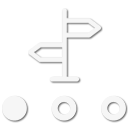Hello. I have the above rig and one of the few items I don’t have a history on is the lower ball joints. I’m aware that there were some catostrophic failures in the past and I don’t believe I have any symptoms of a failing joint. I don’t even know if they are OEM or aftermarket. The vehicle has 276,000 miles. What can I do to make sure I’m not going to fall victim to this issue? I do not have a major lift and I do not do any serious rock crawling, just BLM type roads to kayak and explore.
any assistance is appreciated.
any assistance is appreciated.







